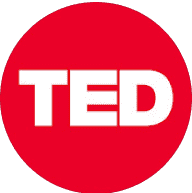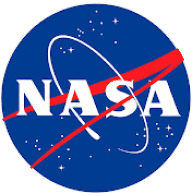What Happens After the Universe Ends?
PBS Space Time・15 minutes read
The universe began with the big bang and will expand indefinitely towards emptiness, with questions remaining about events before and after. Conformal Cyclic Cosmology by Sir Roger Penrose suggests a cyclical universe with endless big bangs, supported by conformal transformations and the concept of invariance under scale changes.
Insights
- Conformal Cyclic Cosmology, proposed by Sir Roger Penrose, suggests an infinite cycle of universes through a process where the end of one universe leads to the birth of a new big bang, emphasizing the importance of conformal transformations that maintain angle consistency despite scaling space.
- Penrose's theory aims to elucidate the early universe's smoothness and low entropy without resorting to cosmic inflation, with testing involving the search for specific features in the cosmic microwave background radiation left by collisions of supermassive black holes from previous universes, although no concrete evidence of information transfer between universes has been found yet.
Get key ideas from YouTube videos. It’s free
Recent questions
What is the Big Bang theory?
The Big Bang theory posits the universe began in extreme heat and compression, expanding infinitely towards cold emptiness.
What is Conformal Cyclic Cosmology?
Conformal Cyclic Cosmology suggests the universe's end will lead to a new big bang, forming an endless chain of universes.
How do conformal transformations work?
Conformal transformations scale space while preserving angles, allowing for equivalence of large and small universes.
Why is conformal invariance important?
Conformal invariance under scale changes is crucial as angles remain constant despite alterations in size.
How does Penrose's theory explain the early universe?
Penrose's theory aims to explain the smoothness and low entropy of the early universe without relying on cosmic inflation.
Related videos

Sabine Hossenfelder
Will the Big Bang repeat?

PBS Space Time
Did Time Start at the Big Bang?

Discovery Science
Stephen Meyer Discusses the Big Bang, Einstein, Hawking, & More - Science Uprising Expert Interviews

TEDx Talks
Cosmology and the arrow of time: Sean Carroll at TEDxCaltech

PBS Space Time
What Caused the Big Bang?
Summary
00:00
Endless Universes: The Theory of Conformal Cyclic Cosmology
- The universe originated in a state of extreme heat and compression known as the big bang, and it is projected to expand infinitely towards a state of cold and emptiness.
- Questions persist regarding events before the big bang and the fate of the universe post-expansion.
- Conformal Cyclic Cosmology, proposed by Sir Roger Penrose, suggests that the universe's end will lead to a new big bang, forming an endless chain of universes.
- Conformal transformations, essential for this theory, involve scaling space while preserving angles, allowing for the equivalence of large and small universes.
- The concept of conformal invariance under scale changes is crucial, as angles remain constant despite size alterations.
- Universes containing only light or massless particles lack the ability to measure time, rendering them equivalent under conformal transformations.
- The late universe, filled with radiation, may eventually lose mass, leading to a sizeless state.
- The early universe, abundant with effectively massless particles, also lacks a meaningful concept of time.
- Penrose's theory of conformal cyclic cosmology aims to explain the smoothness and low entropy of the early universe without relying on cosmic inflation.
- Testing this theory involves observing potential features in the cosmic microwave background radiation left by collisions of supermassive black holes from previous universes.
14:19
Interuniversal Information Transfer and Alien Virus Concerns
- Possibility of information transfer between universes through holes, but no evidence found yet.
- Patreon supporters thanked for contributions, with new perk of having names encoded in orbital frequencies of black holes for next Aeon.
- Discussion on viruses traveling between planets, doubts on alien viruses infecting earth life due to DNA code differences. Quarantine protocols for alien microbes discovered on missions detailed.




